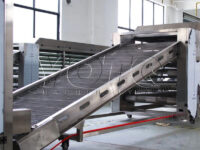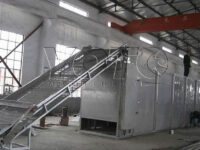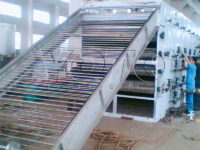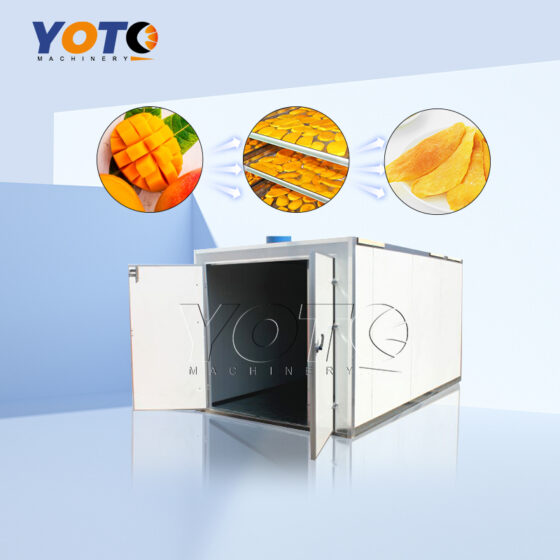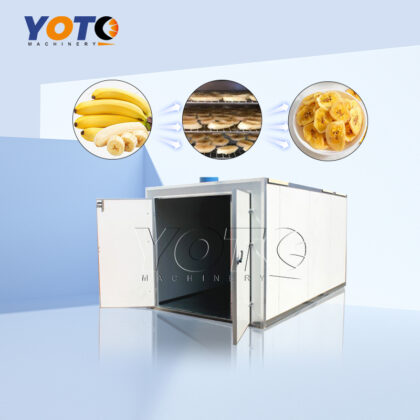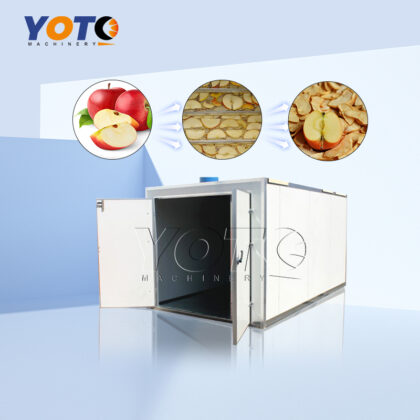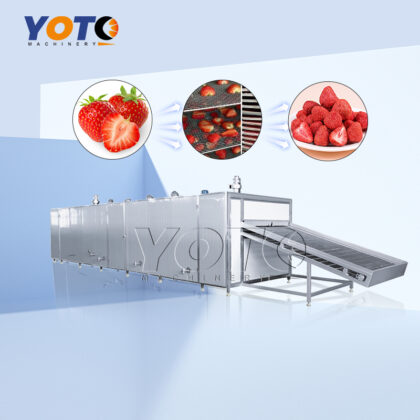The loquat is a highly nutritious fruit that can be consumed directly or used to create a diverse range of foods and medicines. Its unique flavour gives it significant economic and medicinal value. Furthermore, it is a widely sought-after ornamental tree for gardens.
Our mesh belt drying equipment is expertly crafted to meet a variety of output requirements. It boasts automatic feeding, discharge, and control, as well as low heat consumption, high production efficiency, simple operation, easy maintenance, and a wide range of applications. The equipment is comprised of a belt conveyor, automatic feeding machine, drying machine, and other top-of-the-line components. The machine effectively removes moisture and achieves the purpose of drying by utilizing the contact movement between hot air and wet material. The main heating methods, which include electric heating, steam heating, and hot air heating, are all highly efficient.
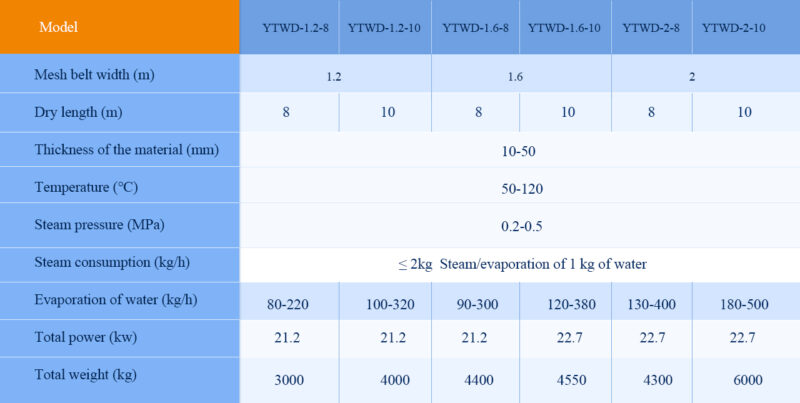
1. Large capacity: The mesh belt dryer provides continuous and automated production, with rapid dehydration speed, brief drying time, and high output.
2. High quality: The materials will maintain their shape, brightness, and colour.
3. Clean and sanitation: The drying process is completed in a closed box, ensuring protection from external pollution.
4. Intelligent and controllable: The equipment is highly automated and easy to operate. You can adjust the drying area, air pressure, air flow, drying temperature, and belt running speed with ease.
5. Wide usage:This phrase is suitable for material from any field.
6. Flexible mobility, and simple installation.
Step 1: To prepare, make sure to select fresh and ripe loquat and make sure there is no visible damage or rotting parts. Next, wash,peel and de-seed the loquat. Then, cut them into slices. With these simple steps, you’ll be on your way to perfectly dried loquat!
Step 2: If desired, place the loquat in soaked salted water. This step will help preserve the colour and texture.
Step 3: To dry the slices, put them in the drying equipment and adjust the temperature and time according to the instructions provided. Be sure to evenly distribute the loquat on the tray to ensure they dry evenly. It’s best to use temperatures between 125°F (about 52°C) and 135°F (about 57°C). The drying time ranges from a few hours to a full day.
Step 4: Regularly check the condition of the loquat to ensure even drying, and you can turn the slices to facilitate the drying process.
Step 5: Once the loquat have finished drying, take them out and let them cool. To extend their shelf life, store the dried loquat in a cool, dry, and well-ventilated container, away from direct sunlight and humidity.
Users can adjust the drying process according to their needs during actual use.
Fruit: Mango, banana, apple, strawberry, grape, lemon, longan, apricot, fig, tangerine, persimmon, pineapple, rosa roxburghii tratt, golden berry, grapefruit, loquat, cantaloupe, wax berry, start fruit, pawpaw, lychee, jackfruit, pitaya, arecanut, etc.
Vegetable: Tomato, cassava, potato, chili, yam, mushroom, agaric, ginder, onion, garlic, radish, beet root, eggplant, bitter, oyster mushroom, pumpkin, etc.
Sea food: Sea cucumber, squid, fish, shrimp, kelp, etc.
Flower&Leaf: Rose, jasmine, osmanthus, chrysanthemum, tea leaf, tobacco, etc.
 fruit and vegetable drying machines
fruit and vegetable drying machines



